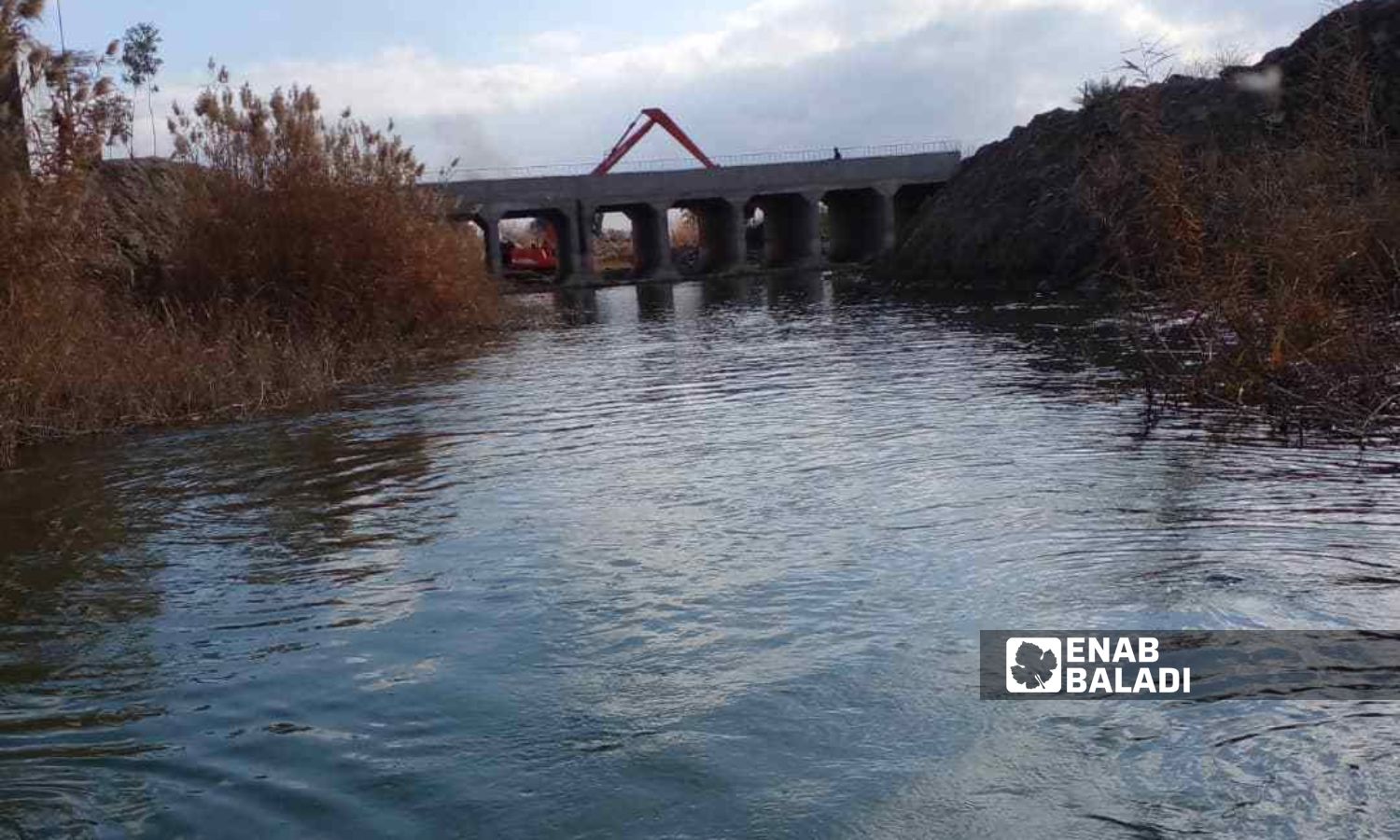



Deir Ezzor – Obadah al-Sheikh
Several villages and towns in the eastern Deir Ezzor governorate, which the Autonomous Administration of North and East Syria (AANES) controls, are experiencing a water shortage, which has led to the spread of infectious diseases.
The villages of al-Sousa, al-Baghouz, Mozan, al-Safafna, and Hawija al-Mashhadah in the eastern countryside are suffering from a complete drought of water from a subsidiary river that supplies the towns and draws its water from the Euphrates River, due to the base of the al-Marashda-al-Sousa bridge being about two meters above the surface of the water, which impedes its passage.
The lack of access to water exposes agricultural areas estimated at about 70,000 hectares to drought and creates swamps that represent a fertile environment for disease-causing insects such as sand flies and others, according to farmers and notables interviewed by Enab Baladi.
The Sheikh of the al-Marasma clan, Ahmed al-Aboud, told Enab Baladi that a bridge was built on the subsidiary river before 2011, and it has openings for water to pass through, and farmers rely on it to irrigate the lands in al-Sousa, al-Marashdah, Mozan, a large part of al-Baghouz, and parts of Hawija al-Mashhadah and al-Safafna.
Al-Aboud explained that during the period of battles between the International Coalition Forces and the Islamic State group in the Deir Ezzor countryside, the bridge was bombed by coalition aircraft and was destroyed in 2019.
After the fighting stopped, the bridge was rebuilt by one of the contractors, and a new base was placed on top of the old one, which obstructed the passage of water through the openings.
The height of the bridge’s surface led to the receding of the water behind it, which exhausted the farmers and caused damage to agricultural crops, according to al-Aboud.
The water level in the subsidiary river rises after rains in the winter, but it recedes in the summer, and the bridge becomes a dam behind which the water stops.
Ahmed al-Shehab, former president of the al-Baghouz agricultural association, said that crops do not receive a sufficient amount of water, which negatively affects the productivity and quality of crops.
Al-Shehab stated that the rise in water levels before the bridge led to the formation of swamps, which increased the spread of diseases such as leishmaniasis and others, in addition to the river water being highly polluted, making it unfit for use.
Muhammad al-Khatlan, former head of the services committee in al-Baghouz, said that the lack of experience of contractors and engineers who repaired that facility caused obstacles for farmers.
Al-Khatlan told Enab Baladi that the process of repairing the bridge did not take into account the problem of water shortage, which turned into a major problem for farmers.
Over the past five years, solutions have been absent from the responsible authorities in the Autonomous Administration and even from the relevant organizations. Suggestions have been put forward, such as constructing ferries next to the bridge, but these solutions have not been implemented.
Agriculture in northeastern Syria, especially in Deir Ezzor, faces several difficulties, including the absence of support and high fuel prices. One of the most recent problems facing farmers is the spread of the phenomenon of soil salinity in the lands of the eastern countryside of Deir Ezzor.
Farmers attributed the causes to the slowness in cleaning and rehabilitating excess water drains, as its accumulation over long periods of time causes soil salinity.
According to statistics conducted by the AANES Irrigation Committee in the region, between 2,300 and 2,500 hectares were exposed to salinization, and their soil became unsuitable for agriculture.
Syria’s farmers in the four areas of control suffer from a lack of support, an increase in the prices of their agricultural supplies, a lack of markets to sell their products, and the controlling parties setting prices for crops that are not commensurate with the costs of agriculture and do not leave a profit margin for the farmer. Increased production results in a loss for the farmer, as abundant production means lower crop prices.
if you think the article contain wrong information or you have additional details Send Correction